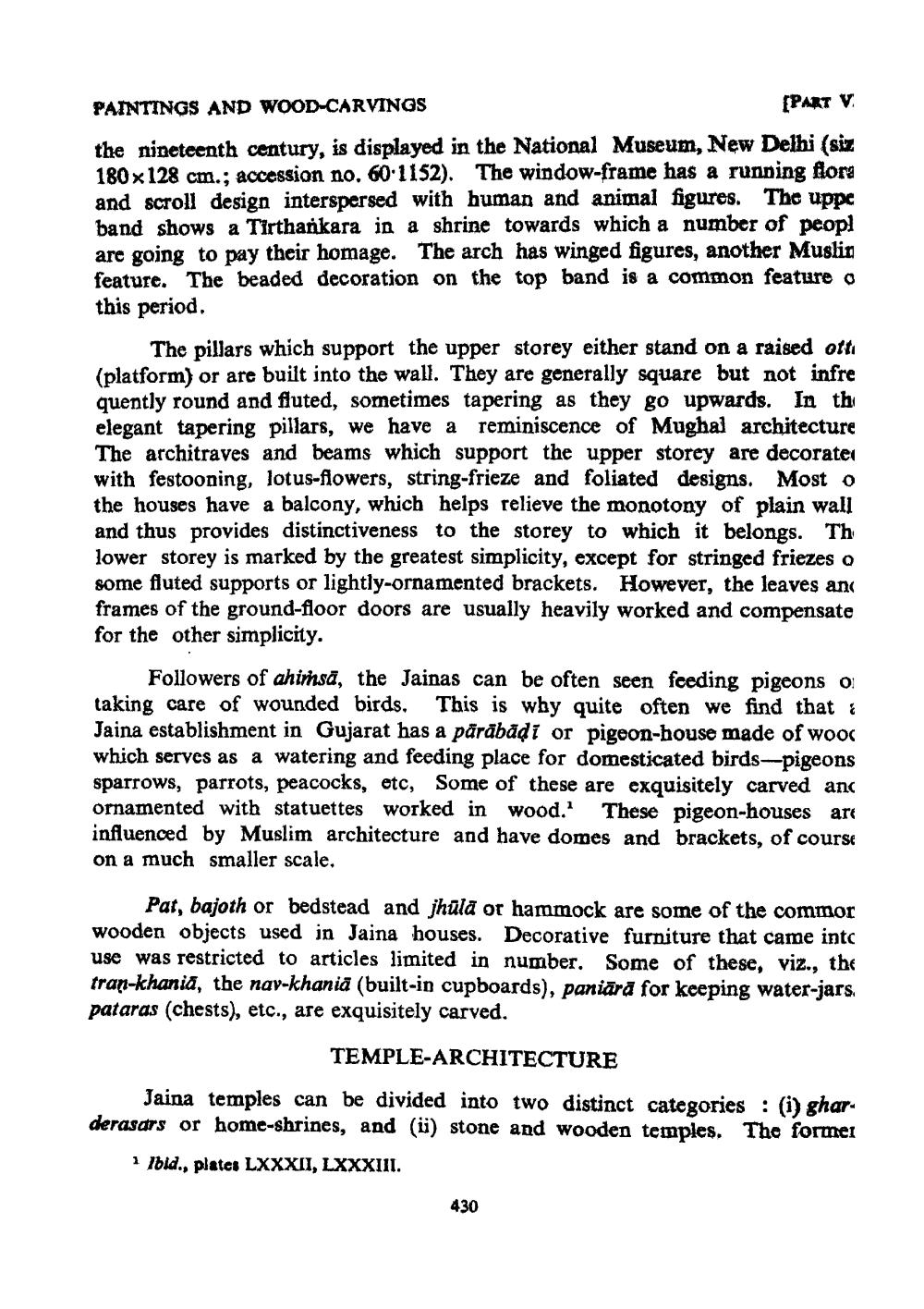________________
PAINTINGS AND WOOD-CARVINGS
[PART V.
the nineteenth century, is displayed in the National Museum, New Delhi (siz 180x128 cm.; accession no. 60-1152). The window-frame has a running flora and scroll design interspersed with human and animal figures. The uppe band shows a Tirthankara in a shrine towards which a number of peopl are going to pay their homage. The arch has winged figures, another Muslin feature. The beaded decoration on the top band is a common feature o this period.
The pillars which support the upper storey either stand on a raised off (platform) or are built into the wall. They are generally square but not infre quently round and fluted, sometimes tapering as they go upwards. In th elegant tapering pillars, we have a reminiscence of Mughal architecture The architraves and beams which support the upper storey are decorate with festooning, lotus-flowers, string-frieze and foliated designs. Most o the houses have a balcony, which helps relieve the monotony of plain wall and thus provides distinctiveness to the storey to which it belongs. Th lower storey is marked by the greatest simplicity, except for stringed friezes o some fluted supports or lightly-ornamented brackets. However, the leaves and frames of the ground-floor doors are usually heavily worked and compensate for the other simplicity.
Followers of ahimsa, the Jainas can be often seen feeding pigeons o taking care of wounded birds. This is why quite often we find that Jaina establishment in Gujarat has a parabad! or pigeon-house made of wood which serves as a watering and feeding place for domesticated birds-pigeons sparrows, parrots, peacocks, etc, Some of these are exquisitely carved and ornamented with statuettes worked in wood.' These pigeon-houses are influenced by Muslim architecture and have domes and brackets, of course on a much smaller scale.
Pat, bajoth or bedstead and jhula or hammock are some of the commor wooden objects used in Jaina houses. Decorative furniture that came into use was restricted to articles limited in number. Some of these, viz., the tran-khania, the nav-khania (built-in cupboards), paniard for keeping water-jars. pataras (chests), etc., are exquisitely carved.
TEMPLE-ARCHITECTURE
Jaina temples can be divided into two distinct categories: (i) gharderasars or home-shrines, and (ii) stone and wooden temples. The former
1 Ibid., plates LXXXII, LXXXIII.
430




